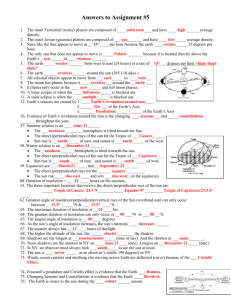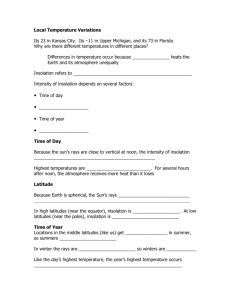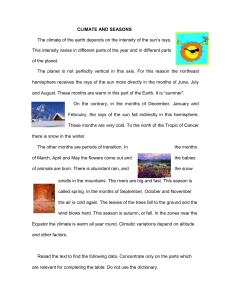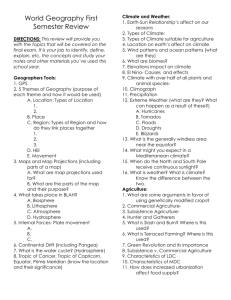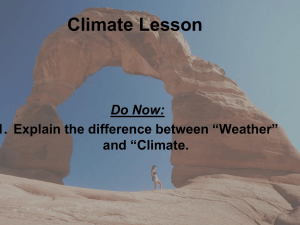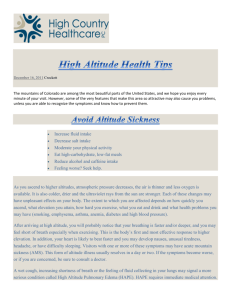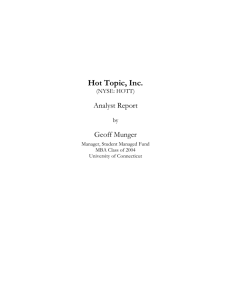class 7 Elements of Weather and Climate
advertisement
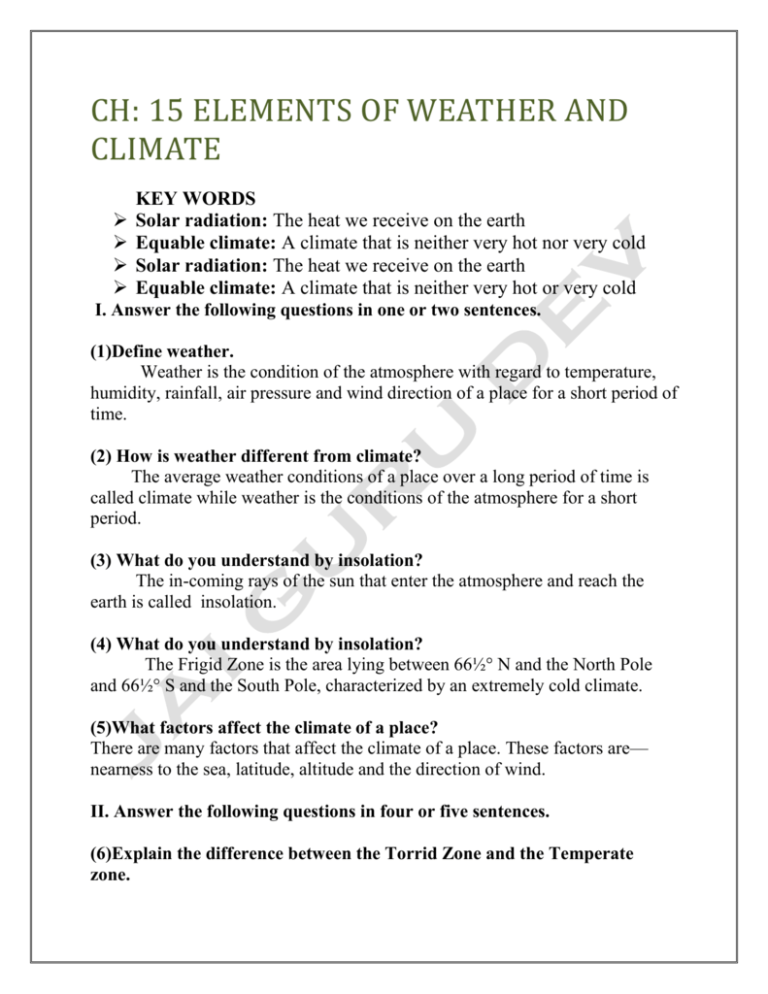
CH: 15 ELEMENTS OF WEATHER AND CLIMATE KEY WORDS Solar radiation: The heat we receive on the earth Equable climate: A climate that is neither very hot nor very cold Solar radiation: The heat we receive on the earth Equable climate: A climate that is neither very hot or very cold I. Answer the following questions in one or two sentences. (1)Define weather. Weather is the condition of the atmosphere with regard to temperature, humidity, rainfall, air pressure and wind direction of a place for a short period of time. (2) How is weather different from climate? The average weather conditions of a place over a long period of time is called climate while weather is the conditions of the atmosphere for a short period. (3) What do you understand by insolation? The in-coming rays of the sun that enter the atmosphere and reach the earth is called insolation. (4) What do you understand by insolation? The Frigid Zone is the area lying between 66½° N and the North Pole and 66½° S and the South Pole, characterized by an extremely cold climate. (5)What factors affect the climate of a place? There are many factors that affect the climate of a place. These factors are— nearness to the sea, latitude, altitude and the direction of wind. II. Answer the following questions in four or five sentences. (6)Explain the difference between the Torrid Zone and the Temperate zone. The condition of the atmosphere at a place for a short period of time is called weather. The components of weather are temperature, air pressure, humidity, rainfall, cloudiness, speed and direction of the wind. Climate is the weather conditions of an area over a long period of time. It is generally the average taken over a period of 35 years or more. The general weather conditions are normally stable and do not change for a long period of time. (7) What do you understand by temperature zone Explain with the help of a diagram. On the basis of the heat received from the sun, there are three distinct heat zones on the surface of the earth: Torrid Zone: The rays of the sun are more vertical here than in the other two zones and therefore this is the hottest zone. Temperate Zone: This zone is neither very hot nor very cold. Frigid Zone: There is little heating here due to the slanting rays of the sun due to which the temperature here remains very low. (8)Differentiate between the Torrid Zone and the Temperate zone. The Torrid Zone lies between the Tropic of Cancer and the Tropic of Capricorn. The rays of the sun are more vertical here than in the other two zones and therefore this is the hottest zone. The Temperate Zone lies between the Tropic of Cancer and the Arctic Circle in the Northern Hemisphere and the Tropic of Capricorn and the Antarctic Circle in the Southern Hemisphere. This zone is neither very hot nor very cold. (9)Explain how latitude and altitude of a place affect temperature. The latitude of a place plays a major role in determining its climate. Places away from the equator are cooler as they receive slanting rays of the sun, which cause little heating. Similarly, the altitude also affects the climate of a place. Places at higher altitudes are generally cooler since the air is thin. Thin air fails to trap heat. Therefore, hill stations are cooler than places in the plains. (10)How do distance from the sea and ocean current affect the temperature of a place? The distance from the sea plays a major role in affecting the climate of a place. As water takes longer to heat up and longer to cool down in relation to land, it has a warming effect in winters and vice-versa in summers. This causes equable or maritime climate in places near the sea. Ocean currents also affect the climate of a place. Warm currents raise the temperature of the coastal areas while cold currents bring the temperature down.
